How to Arrange Living Room Furniture
When you’re faced with an empty living room, trying to visualize the end result can be overwhelming. You may know what you like, but figuring out how to put it all together can be a bit of a challenge.
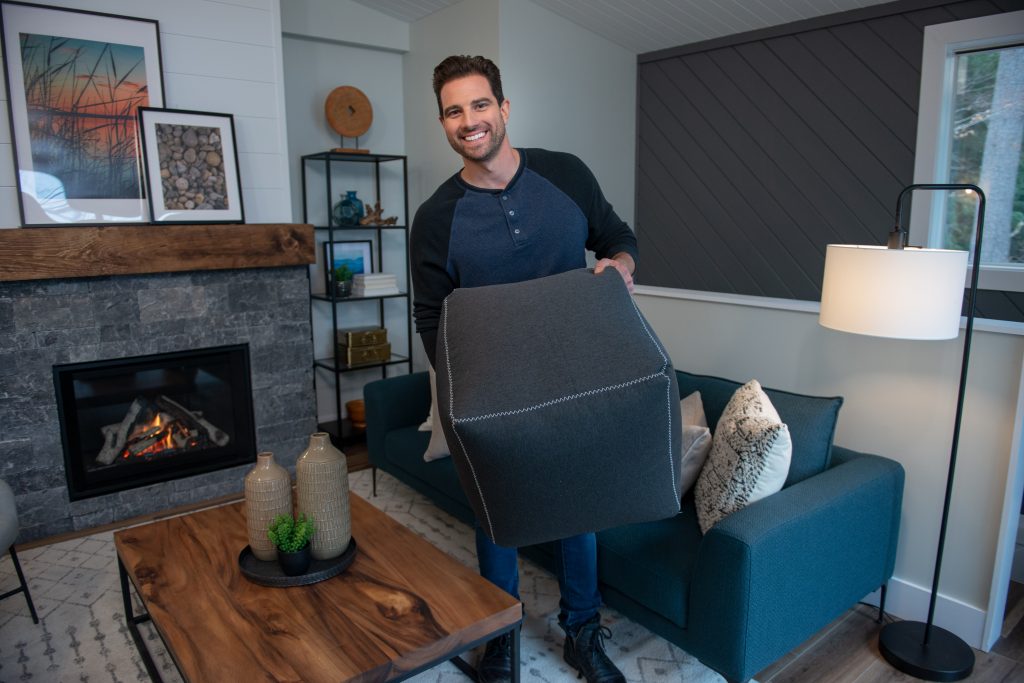
With that in mind, here are five of my go-to tricks for arranging furniture, with examples from some of my recent projects and favourite furniture pieces.
Choose a Focal Point
The first thing you should do in any room is determine where your focal point will be. More often than not, focal points appear naturally based on the size, shape and architectural elements of the room (such as a fireplace). That said, if you’re having trouble, you can choose where you want your focal point to be and design around it. A piece of art, a television, or a large media unit/bookcase can do the trick.
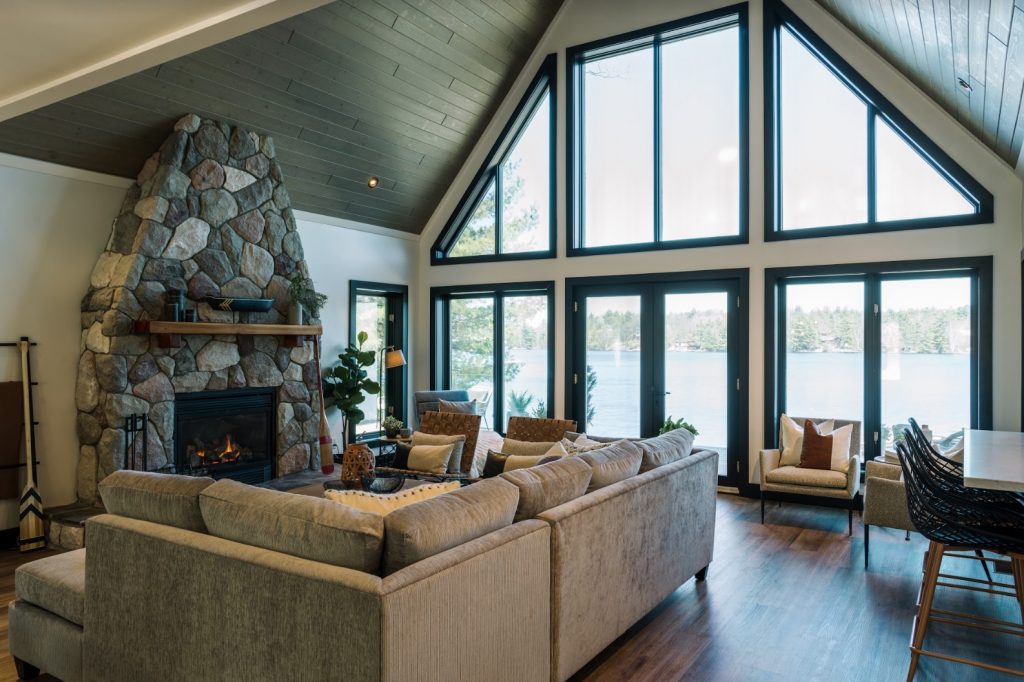
The fireplace felt like a natural focal point in this open concept cottage, so I placed Mobilia’s fabric sectional sofa bed in front of it. With the sectional in place, the rest of the furniture easily fell into place.
Create Conversation Areas
Conversation areas are a key part of arranging furniture. As a general rule, I try to position furniture so that people can face each other and have conversations – and see the focal point – without having to strain their necks. Once you’ve figured that out, be sure to consider traffic flow. Make sure there are clear paths from one end of the room to the other and that there are a couple of feet between the coffee table and sofa, and between chairs. The size of your room will always dictate how much space you have, but the idea is that no one has to zig zag too much or get tripped up on furniture as they cross the room.
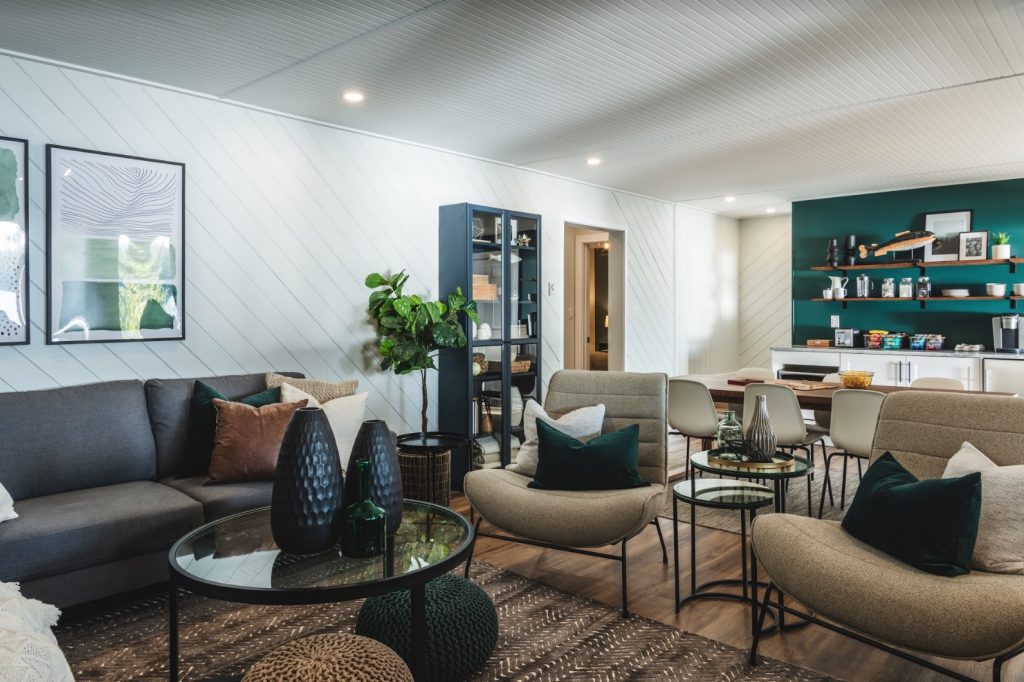
This room is a busy, high-traffic area in an open concept vacation home. I used accent chairs and tables from Mobilia that can easily be moved around for the sake of conversation and traffic flow.
Create a Sense of Balance
Creating balance in a room seems like one of those things only interior designers talk about, but it’s really pretty simple – and pretty important! Basically, if you group a bunch of large or small pieces together in one part of the room it will feel lopsided, so don’t do it. Try to distribute things in a balanced way. Also, think about the shapes of all the items. If most of your furniture is square and boxy, consider a round coffee table, or rounded accessories like lamps or throw pillows to balance things out.
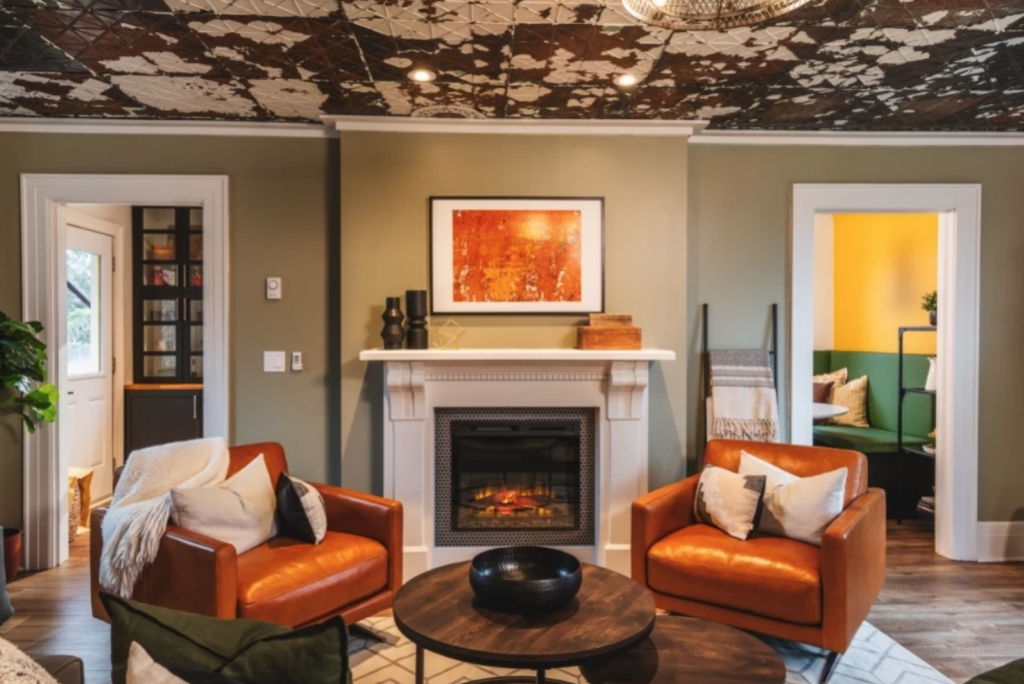
The round coffee table creates a sense of balance when paired with Mobilia’s NEMAN Leather Accent Chairs and the room’s square architectural elements.
Use Tables
This heading may seem obvious, but I know someone who refused to have tables in her living room because she felt they “attract clutter”. Be that as it may, when someone sits down and wants to put down their drink, it can be problematic. In my opinion, every seat should have easy access to either a side table or coffee table. Avoid layouts that force people to move from their seats in order to set down or retrieve drinks (or anything else they might need). And when it comes to table heights, remember these guidelines: side tables should be approximately the same height as the nearby chair arms, and coffee tables should be the same height as chair/sofa seats, or lower.

In this living room, Mobilia’s NARDO coffee table sits within reach of all the seats. With little room for side tables, this large coffee table was an excellent solution.
Use Rugs to Define Spaces
One of the best ways to define a space – especially in open concept homes – is with an area rug. An area rug will help anchor a space and it immediately gives you a spot to place furniture. Since furniture should usually be on the rug (or at least the front legs of large pieces should be), it will help to guide you when deciding on placement.
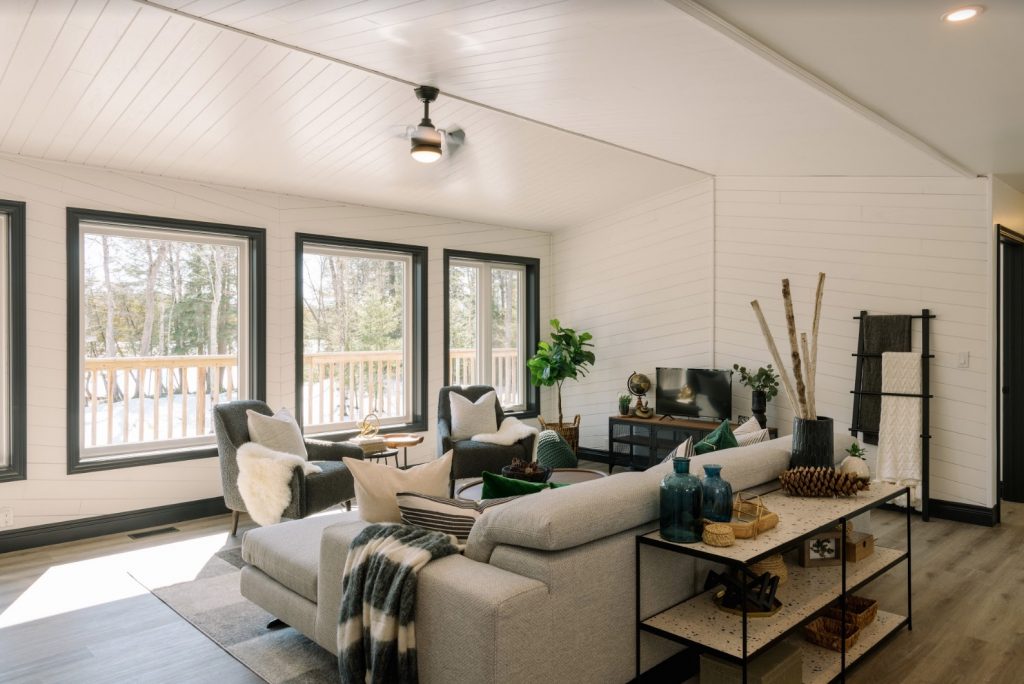
When it comes to arranging furniture, it’s never as difficult as it seems as long as you follow a few simple guidelines. For more styling tips and furniture ideas, please visit www.Mobilia.ca.

Comments